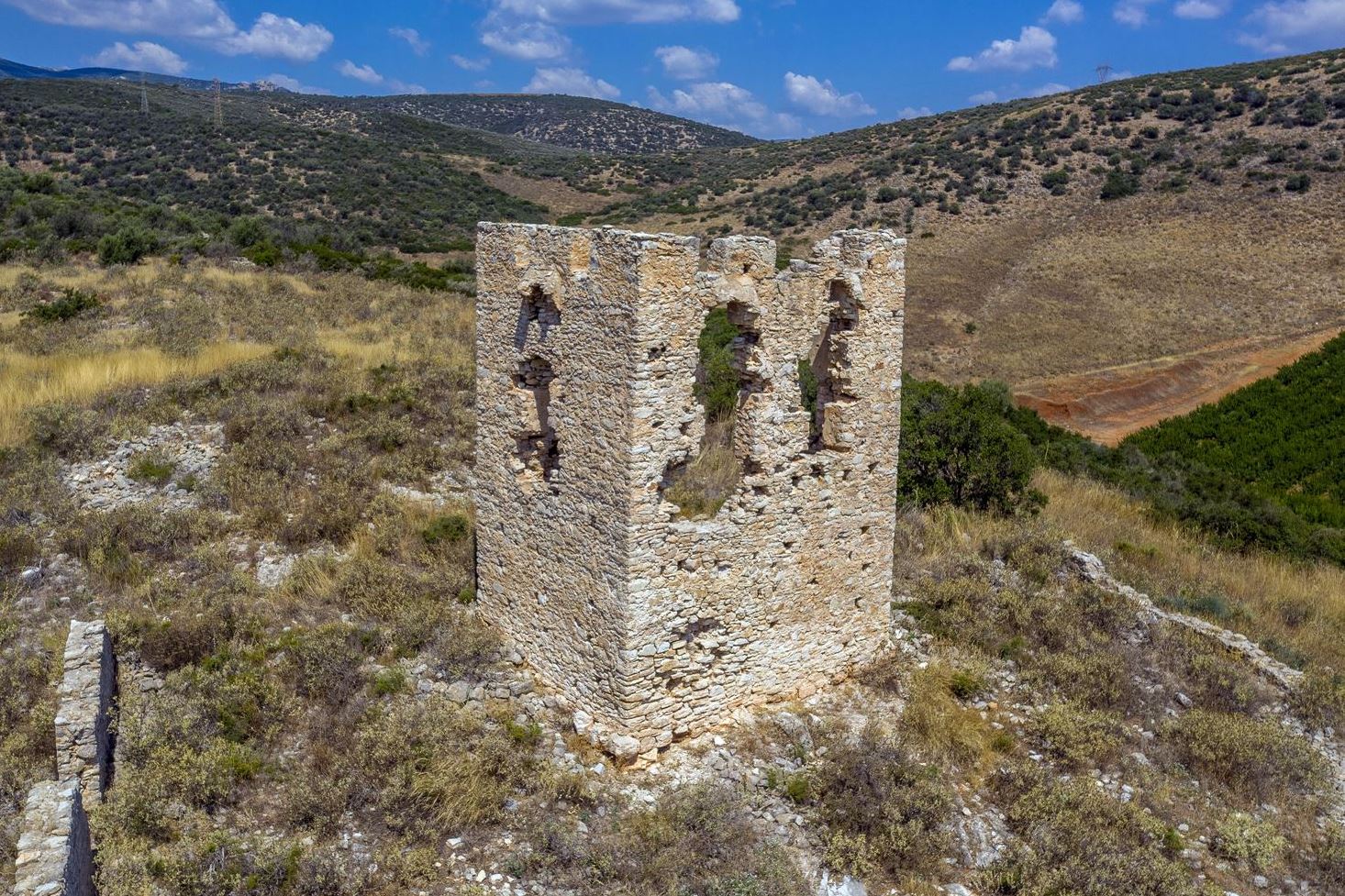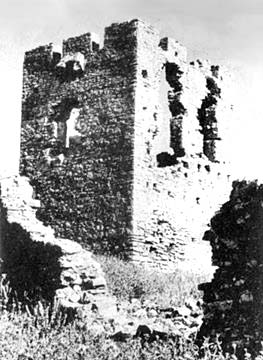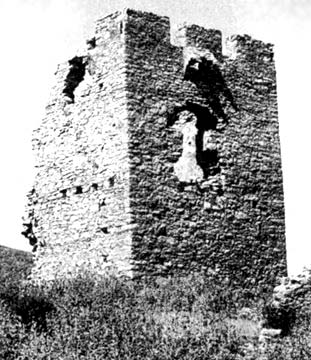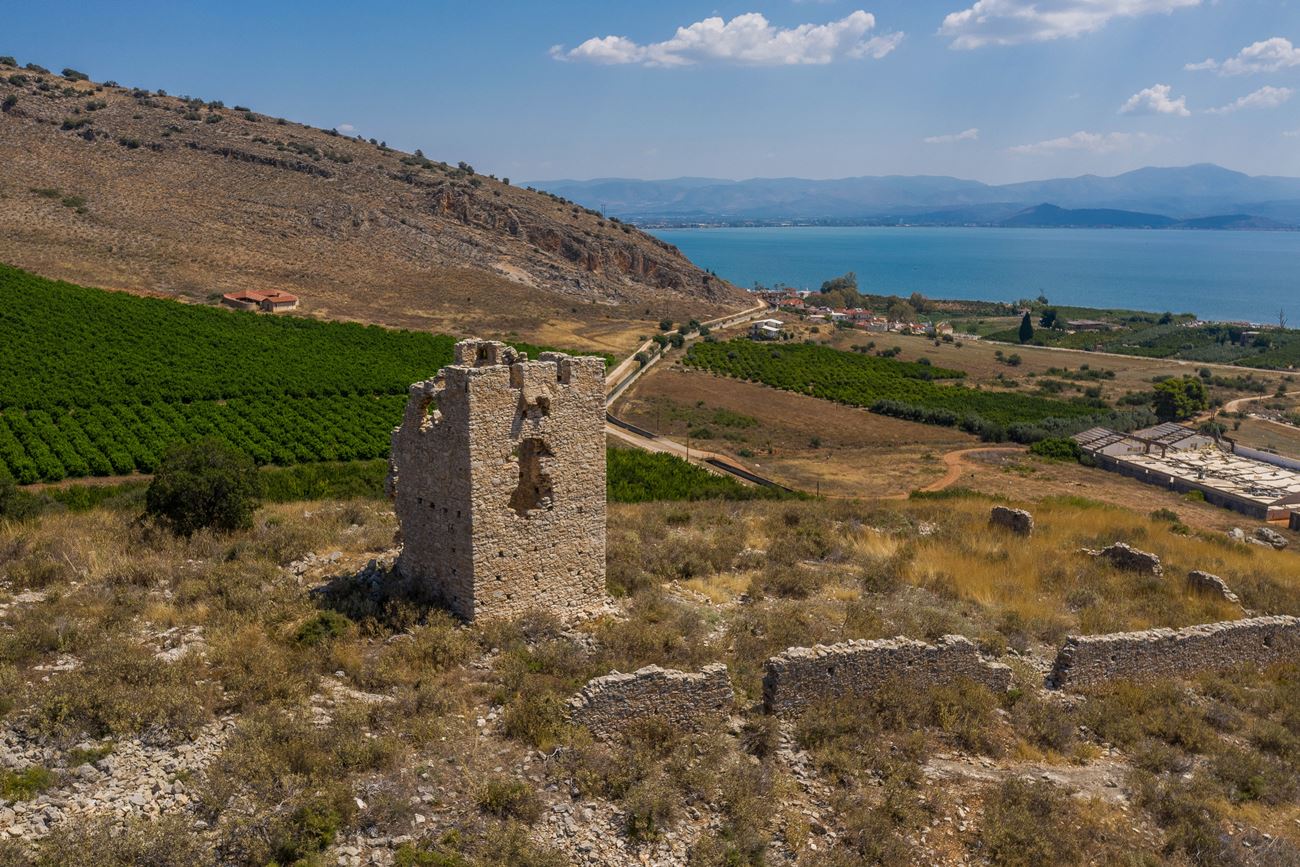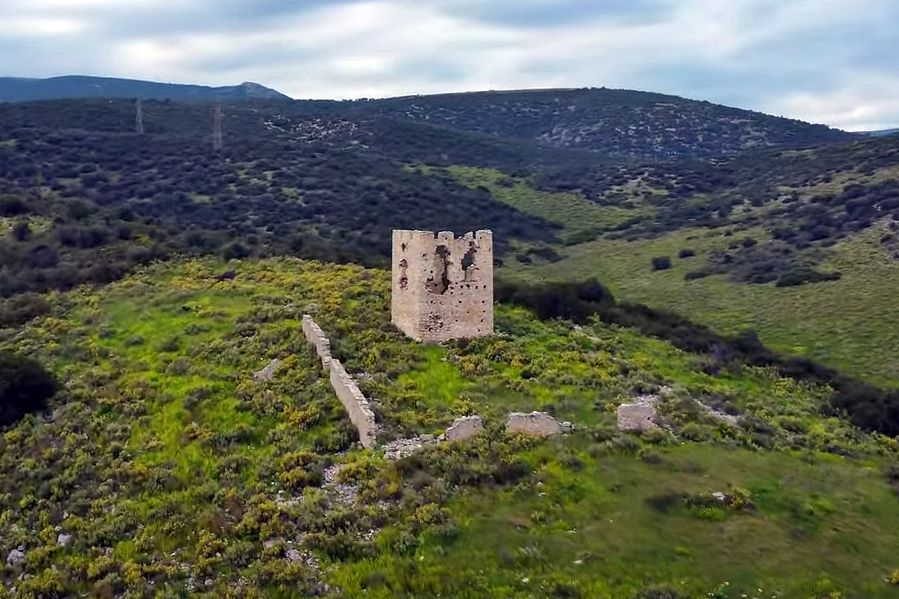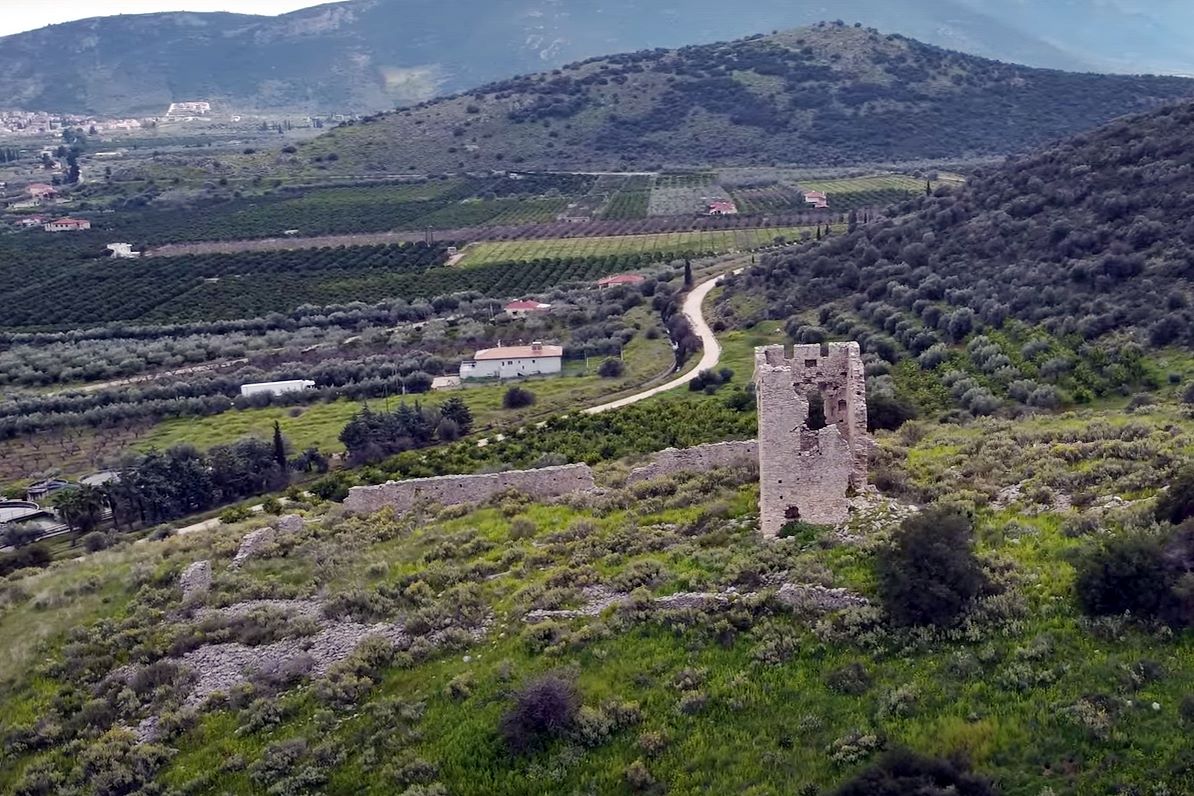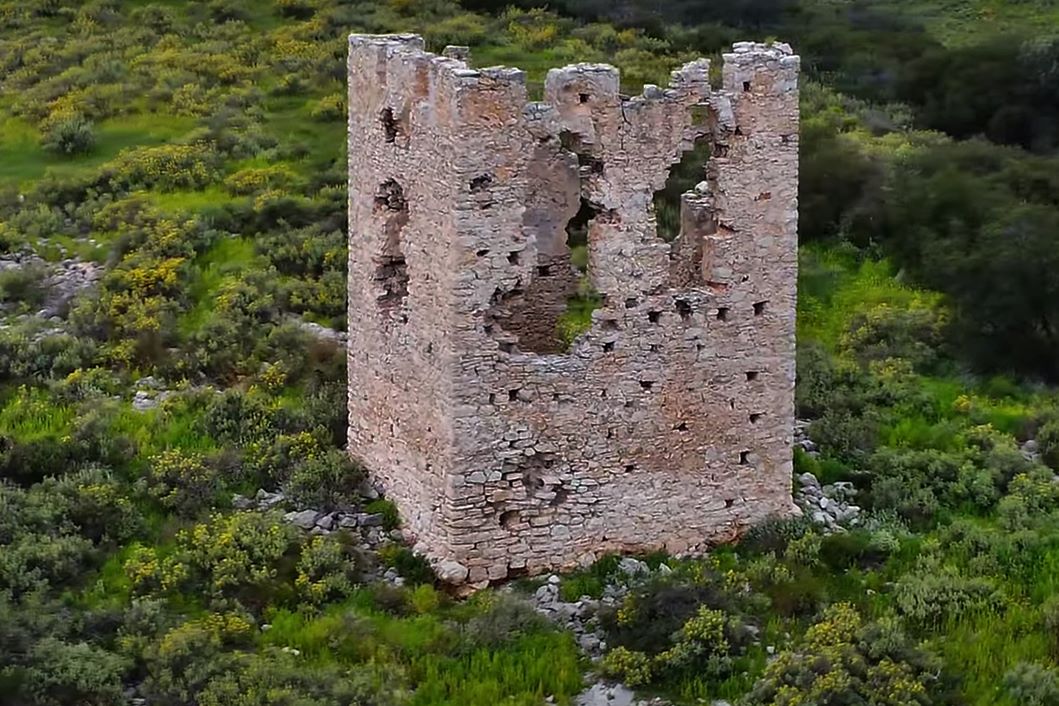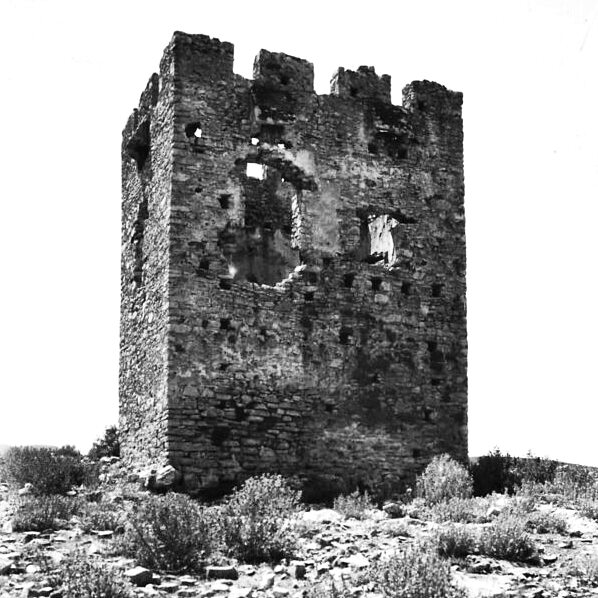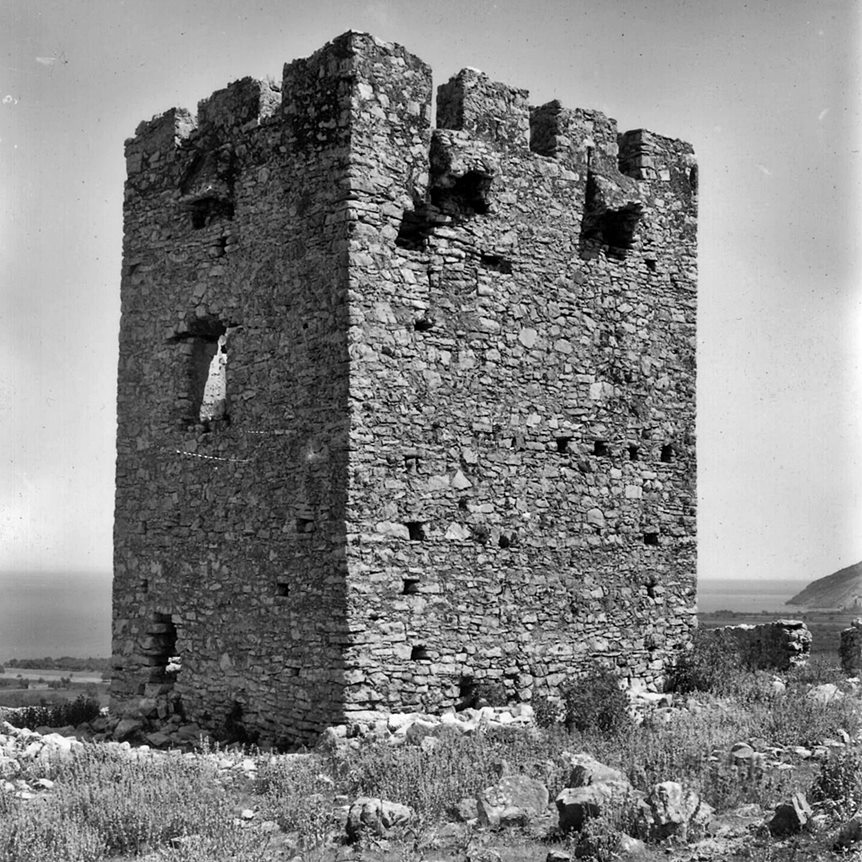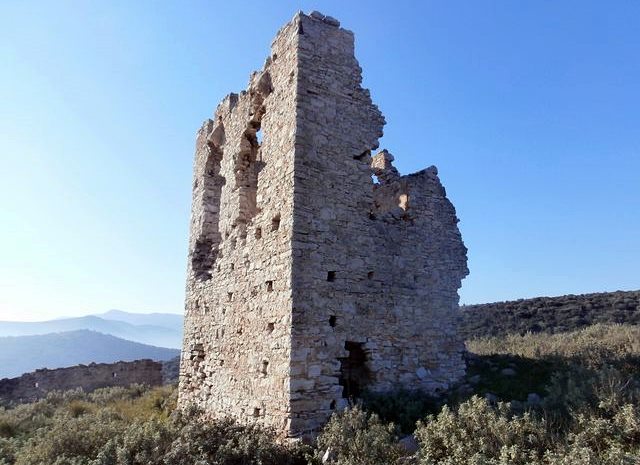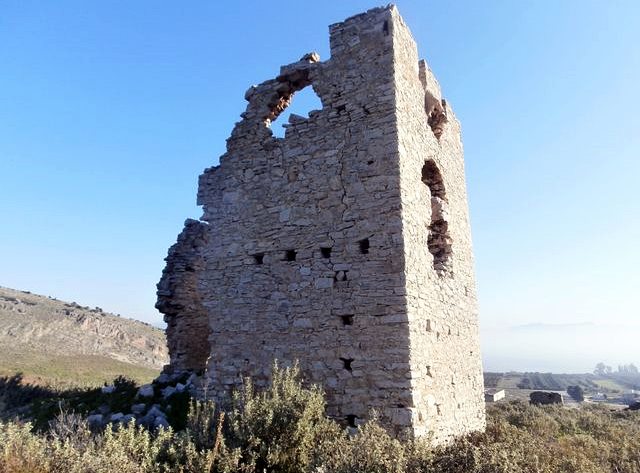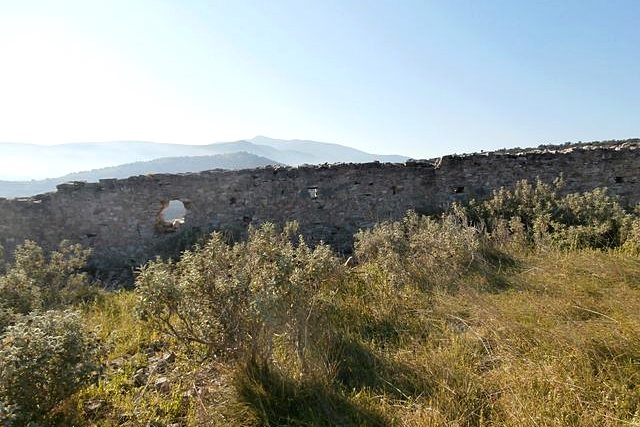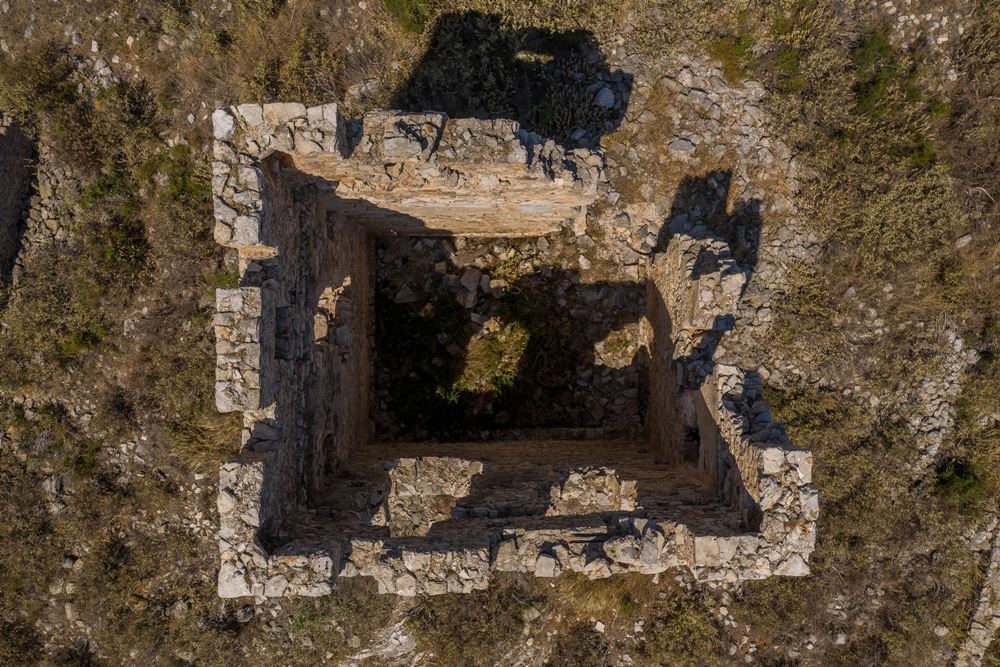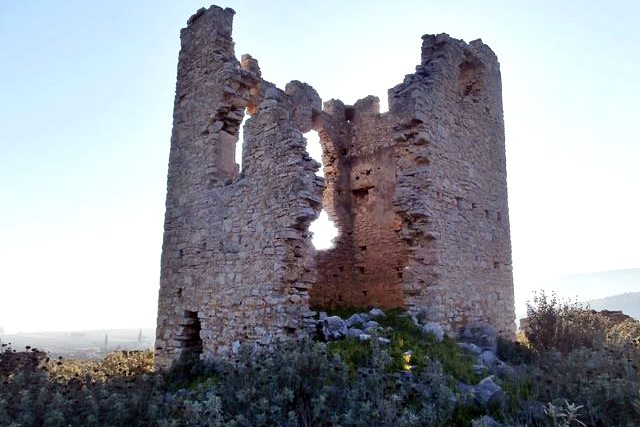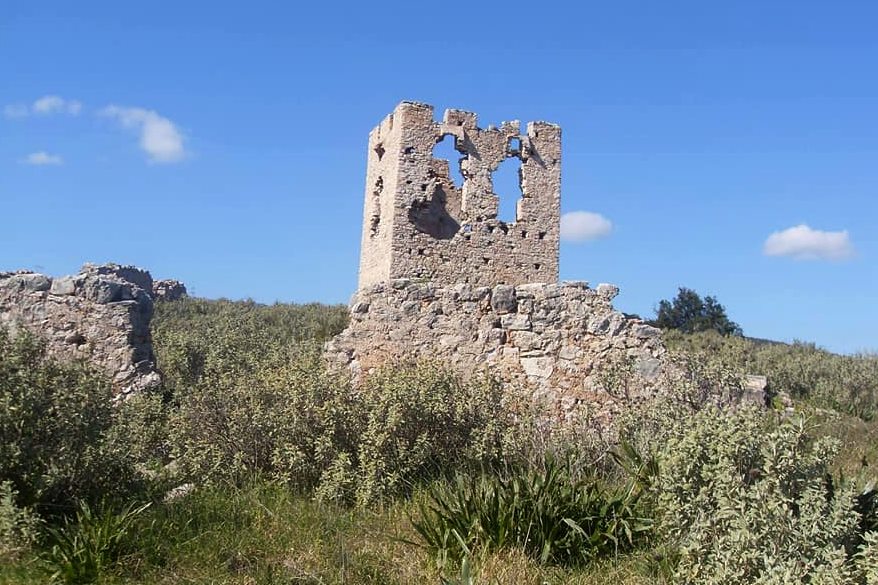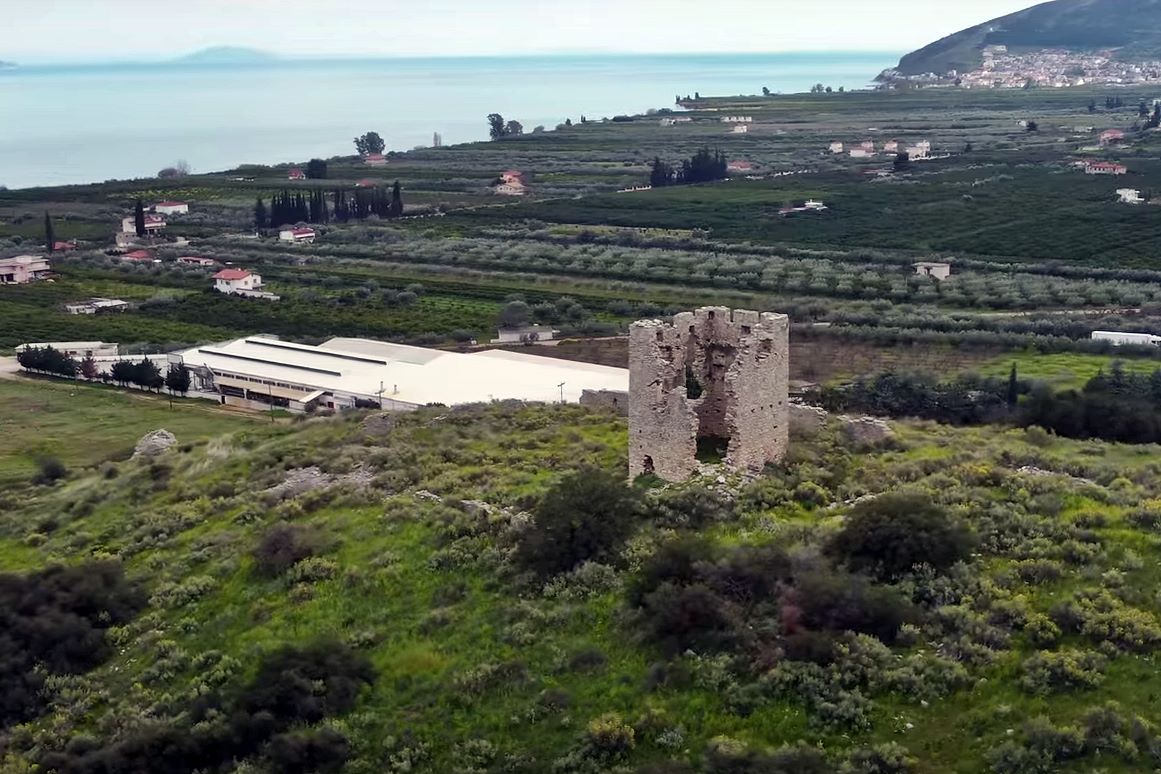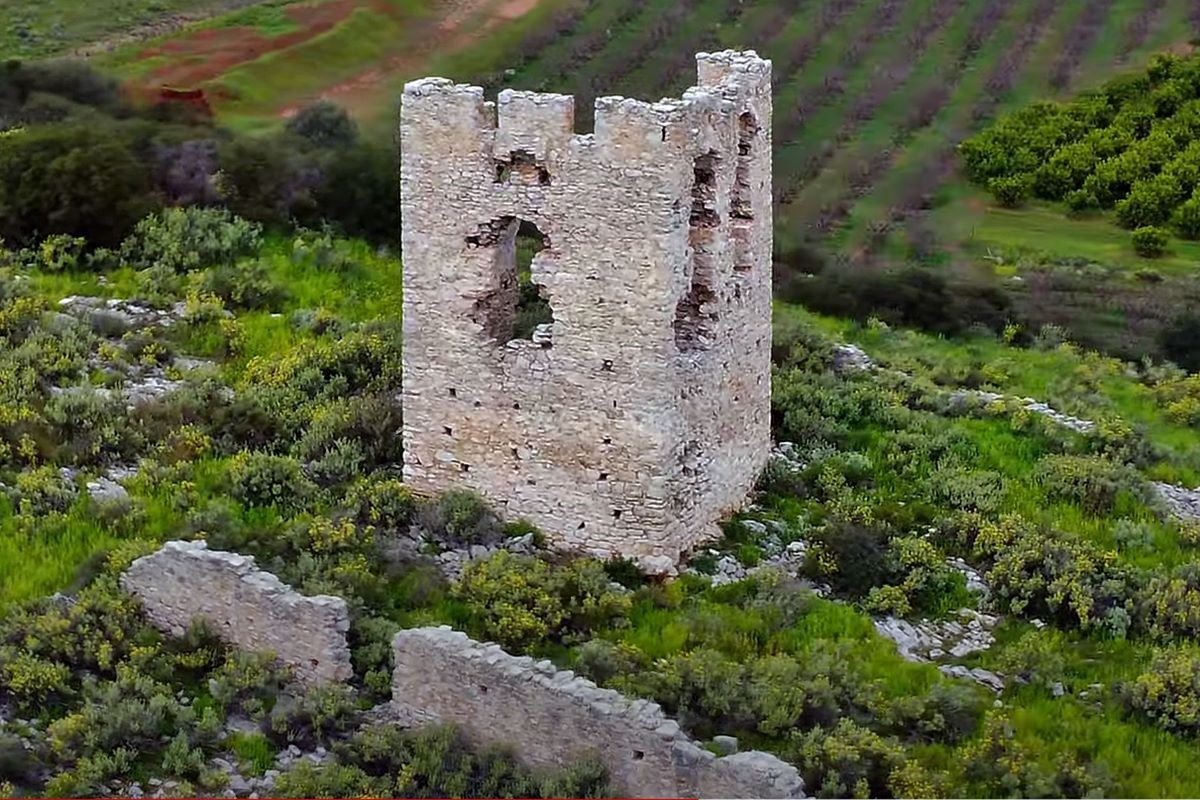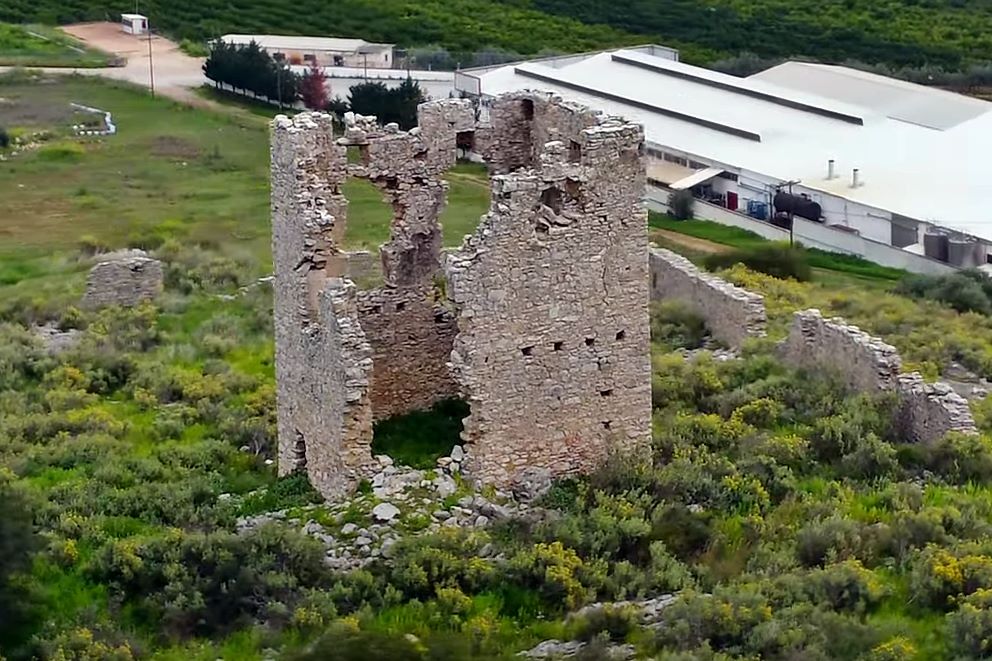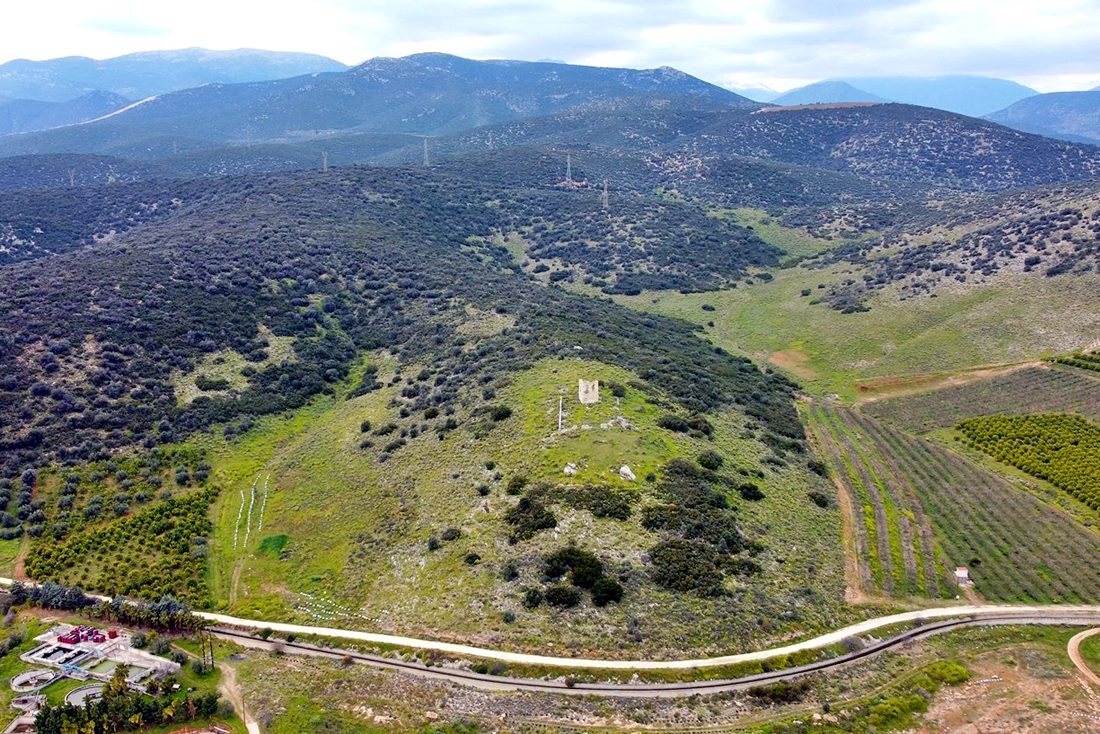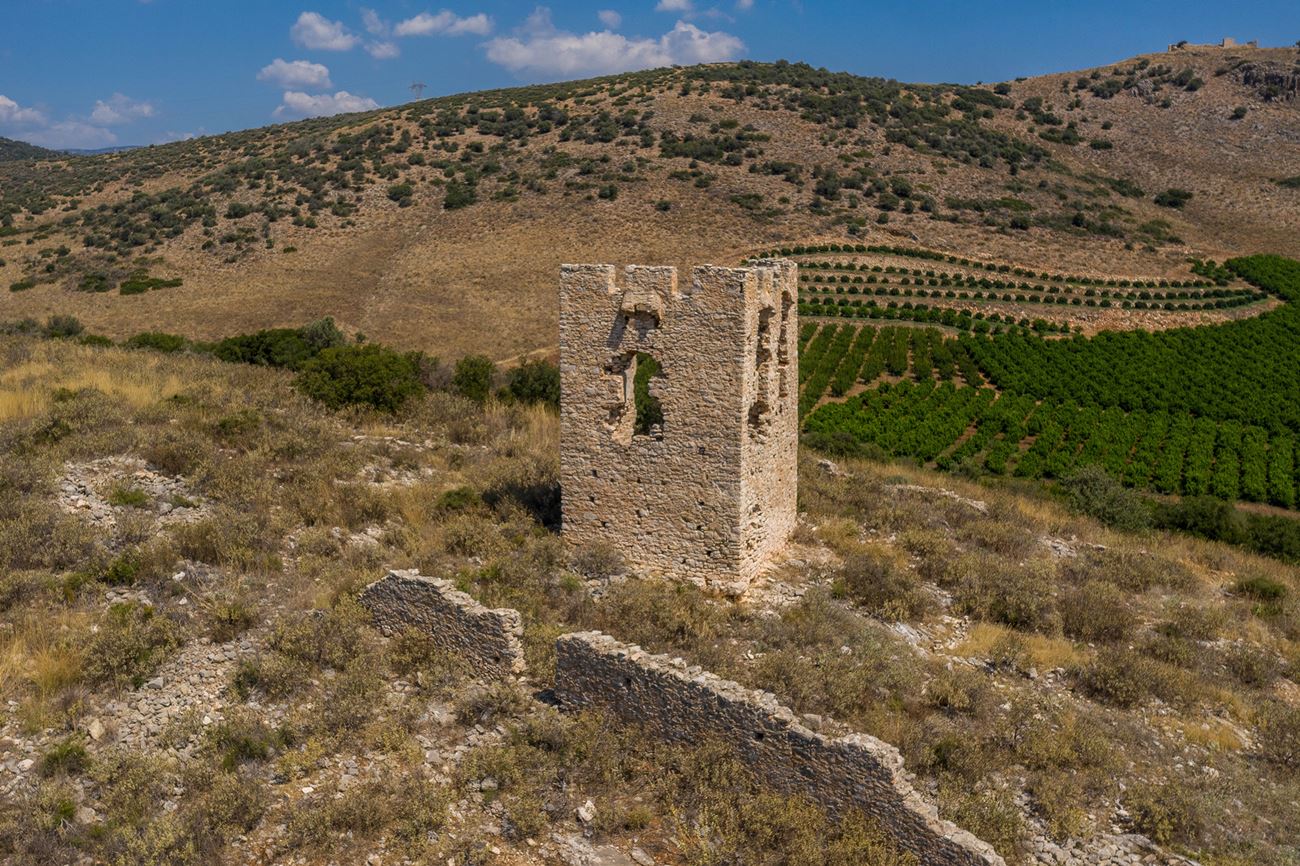Myloi, Argos-Mycenae, Argolis,Peloponnese
Tower of Kiveri
| Location: |
| On a hill south of Myloi in Argolid, eastern Peloponnese |
| Region > Prefecture: | 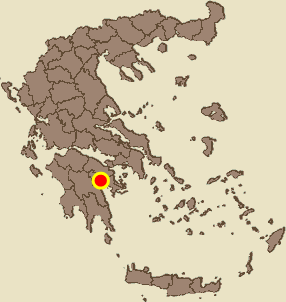 |
| Peloponnese Argolis | |
| Municipality > Town: | |
| City of Argos-Mycenae • Myloi | |
| Altitude: | |
| Elevation ≈ 74 m |
| Time of Construction | Origin | |
| 13th or 14th cent. | FRANKISH |
|
| Castle Type | Condition | |
| Tower |
Rather Poor
|
Remains of a tower-and-court complex some 500 meters south of modern Myloi, close to the coastal road towards southern Peloponnese, on a long flat spur (elevation about 74 m).
The Name of the Castle
In the past, the tower was known as “The Tower of the Princess” (Gr: o πύργος της Βασιλοπούλας). The people of the vicinity say that it is named for a princess who lived there long ago; because of her incredible beauty (others say, her unspeakable ugliness) she had a subterranean passage built from the tower to the shore, so that she could descend unobserved to bathe in the sea.
The tower is currently known as the tower of Kiveri or Civeri because the old village of Kiveri was nearby. The modern Kiveri is at the coast, 6km to the south.
History
Kiveri was under Frankish rule after 1205, it was taken by the Byzantines of the Despotate of Mystras in 1388 and came under Venetian rule from 1394 until 1458 when the Ottomans conquered Peloponnese. The Venetians briefly reoccupied the area in the following two centuries.
Based on the old pictures of the tower (see above) it was probably a Frankish tower (it is considered rather Ottoman by McLeod.).
The unstuccoed ground floor suggests stables; the stuccoed second storey suggests living quarters. The third storey, with its adaptations for defense, recalls the parapets of the Maniote towers. In plan the complex resembles the fortified farms both of ancient Greece and of the mediaeval Aegean islands.
Structure, Fortification & Buildings
The court, roughly rectangular, and oriented east-west, measures about 20 m by 60 m. It is built on a nearly flat plateau. The wall, which is 0.60 m. thick, stands to a height of two meters on the south and east, one meter on the north.
The central tower measures 5.50 m by 6.75 m; its walls are also 0.60 m thick.
The entrance must have been in the west face near the north side, which has collapsed; one cannot determine whether the entrance was at ground level or higher. The tower is standing to its full height (nearly 10 meters). Above ground there were two floors, as indicated by the beam holes. Between the two floor levels the interior is stuccoed; the north and south walls each have two niche-like cupboards set into the wall about a meter above the floor. There were large windows in this second storey, one each on the north and south, two on the east, probably one on the west.
The tower is crowned with a crenellated parapet, four rectangular merlons on the east and west, three on the north and south. The third storey has smaller windows beneath the merlons (two on the east and west, one on the north and south), originally protected by huchettes. At each corner of the third storey is a meurtriere (narrow opening to allow observation and sending projectiles.). The third storey, with its crenellations, huchettes, and meurtrieres, can have had no purpose
but defense.
Both the circuit wall and the tower are constructed of the local limestone, roughly coursed; in the tower a high course frequently alternates with one or two thin courses. Tile fragments are employed to fill the crannies of both wall and tower. The mortar is hard and sandy, with many pebbles; it is thickly applied, often like a stucco.
| First entry in Kastrologos: | November 2015 | Last update of info and text: | April 2022 | Last addition of photo/video: | July 2023 |
Sources
- Wallace E. McLeod, Hesperia: The Journal of the American School of Classical Studies at Athens, Volume 31, Issue 4, “KIVERI AND THERMISI”, 1962
- photos 10, 11, 12, 14:: Δημήτριος Περσέας Λουκίσσας
- photo 15: Κώστας Τσακίρης
- photos 1, 4, 13, 20: Fred Kok (July 2023)
- Video by the user G Traveller Πύργος Κιβερίου | Tower of Kiveri, source of the photos 5,6,7 and 16, 17,18 (April 2023)
|
|
| Access |
|---|
| Entrance: |
| Free access |



